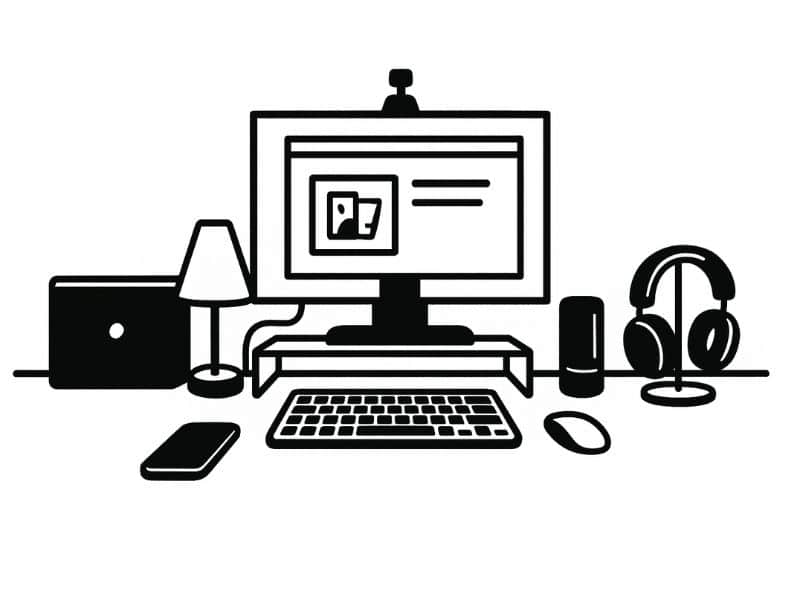Look, I’m not about to sit here and pretend I’m the second coming of Tim Ferriss. I’m not the most productive person in the world. But I am dangerously stubborn about trying to stay motivated every day.
Over the past year, I’ve listened to almost every productivity guru, scrolled through enough motivational quotes to start a cult, and yes, used myself as a lab rat in the name of “optimization.”
Here’s what worked for me that you can try.
Reality Check: We don’t have 24 Hours
We all pretend we have 24 hours in a day. It’s a beautiful lie we tell ourselves while scrolling through Instagram posts of influencers who somehow build empires, maintain six-pack abs, and read 300 books annually.
Here’s your harsh dose of reality: You don’t have 24 hours. Not even close.
Let’s do some math, even though I hate it.
- 10 hours for sleep (including the existential spiral before you pass out)
- 2 hours for basic human maintenance (showers, bathroom breaks, staring blankly into your wall)
- 3 hours for food (preparing it, consuming it, cleaning up after it)
- 1 hour of unavoidable life admin (bills, emails that can’t wait, texting, and being a Marites)
Congratulations! You’ve got about 8 hours of potentially productive time, assuming your mother doesn’t ask you to buy something at the grocery store, your dog doesn’t vomit on the carpet, or your brain doesn’t randomly decide to replay every embarrassing moment from high school.
According to a 2018 study from the University of California, it takes approximately 23 minutes to refocus after being interrupted. Two interruptions and there goes an hour of your precious productive time.
In another study from the Bureau of Labor Statistics, the average working American gets about 7.6 hours of “productive” time per day, and that’s without factoring in Tiktok, Instagram, and Facebook.
The Productivity Framework I Use
1. Write Down 3 Tasks for Tomorrow
Decision fatigue is real. Each choice you make throughout the day drains your mental battery, which explains why productivity titans like Steve Jobs (bless his soul as Tim Cook is ruining Apple) and Zuckerberg wore the same outfit every day. They weren’t making fashion statements; they were eliminating unnecessary decisions.
Every night, I write down exactly three tasks for tomorrow. Not five, not ten, but only THREE. When I tried setting more, I consistently failed, leaving me feeling like garbage (as if your last date wasn’t enough) instead of motivated. Three high-value tasks completed beats ten abandoned tasks.
The magic happens because:
- You wake up with direction instead of decision paralysis
- You’ve given your subconscious all night to process the problems
- You eliminate the “what should I work on” rabbit hole that murders productivity
2. Sweat Before Screens
The 5 AM Club by Robin Sharma has this right, though I’m not suggesting you need to wake up at an hour when even coffee isn’t awake yet. The principle is what matters: movement before consumption.
When you grab your phone first thing in the morning, you’re essentially saying, “Hey brain, let’s start the day by processing other people’s priorities instead of our own.” Your morning attention is premium mental real estate; don’t rent it out for cheap.
A 2019 study published in the British Journal of Sports Medicine found that morning exercise improved attention, visual learning, and decision making throughout the day.
When I compared six months of rolling around in bed post-alarm versus six months of getting my ass outside?
The difference was vicious.
- No morning exercise = Brain fog by 9 am, existential dread by noon.
- With morning exercise = Clear focus from 7 am to 11 am. (Sure, I need to take a nap by 12pm, but at least I crash victorious.)
Even a 20 minute walk in morning sunlight can improve your energy distribution throughout your day.
3. Kill your Distractions
Phones. Notifications. Shiny things. I’m not gonna pretend I’m immune, I’m a recovering BPO multi-tasker. Back then, multi-tasking was a badge of honor, two monitors, one hand typing, one hand Googling whatever the customer was crying about.
Now?
Turns out that kind of mental gymnastics wires your brain for chronic distraction (Thanks, capitalism.) Plus a short-form dopamine hits from TikTok and Instagram, and you’ve got a perfect cocktail for modern-day ADHD (Official diagnosis courtesy of Dr. Google.).
Research from Stanford University confirms that heavy multitaskers actually perform worse at task-switching than people who focus on one thing at a time. What feels like efficiency is your brain frantically burning resources while accomplishing less.
My solution borders on extreme but works: I maintain two separate phones, one for work, the other for and essential functions and everything else (social media, dopamine farming, texting to friends). The distraction device stays hidden, often in another room entirely. Even my work phone gets a strategic placement, not visible but immediately accessible. This creates what behavioral economists call “friction” in the decision process.
There’s an actual phenomenon called the “Doorway Effect,” where just walking into another room makes you forget why you went there. So yeah, friction matters.
Same goes for my gaming setup. My Windows PC sits right next to me, but switching from my Mac Mini requires unplugging monitors, reconnecting keyboards, and basically filing a flight plan. By making distractions harder to reach, my brain gets bored of the effort, and finally stays locked in where it’s supposed to.
4. Take Breaks
The human brain wasn’t designed for sustained focus over hours. It operates in cycles, not marathons. I use a modified Pomodoro technique: 45 minutes of focused work followed by a 15 minute break. During those breaks, I don’t substitute one screen for another: I move, stretch, hydrate, or stare out a window. The goal is mental decompression, not just activity switching.
Like what they say, go touch grass.
5. Forgive yourself when you drop the ball
There’s a toxic little gremlin inside all of us whispering, “You should’ve done MORE today.” And if you grew up as a Filipino, that gremlin probably sounds suspiciously like your mom yelling from another room, your dad’s disappointed head shake, and your lola’s passive-aggressive guilt trips, all layered together like a sad emotional halo-halo.
Our culture practically worships busyness. If you’re not sweeping floors, folding clothes, running errands, or helping a distant cousin you barely know, then what are you even doing with your life, right? We were trained to think that being still was a sin. Resting is equal to Laziness. Not being productive every second? Disrespectful to the sacrifices of your grandparents.
But here’s the thing, “always be doing something” mindset fries your brain. It wires you for anxiety, not achievement. You grow up confusing movement with progress. And before you know it, you’re stressed out because you spent one afternoon doing nothing but breathing.
That’s why I stopped trying to crush 10 random tasks a day and instead aim for 3 essential ones. Three real, needle-moving actions > Ten fake checkmarks.
If you miss a day? Forgive yourself. Adjust, and Move on.
You’re not a machine, and you’re not supposed to be. Real productivity isn’t about doing more. It’s about doing what matters and still having enough of your soul left at the end of the day to enjoy the life you’re building.
Conclusion
Productivity isn’t about becoming a machine. It’s about understanding your very human limitations and designing systems that work with your biology instead of against it. The most sustainable productivity comes not from heroic efforts but from self-awareness.
Remember: we’re all just complicated monkeys with smartphones, trying to trick ourselves into building better lives, one focused day at a time.





